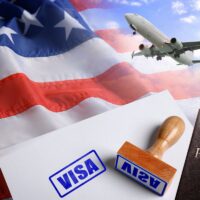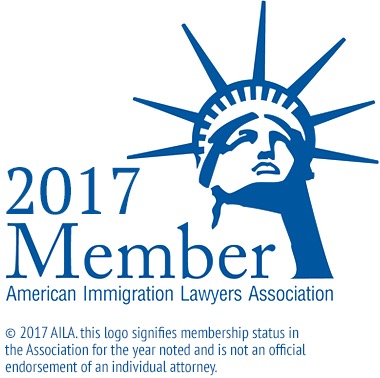Navigating the U.S. Visa System: A Guide to Different Types of Visas and Their Purposes

Whether you are an employer or family member looking to bring over an employee or relative, or if you are looking to immigrate for professional or personal reasons, it all starts with knowing which visa or visas apply to your situation and which one would be the best fit in your circumstances. With numerous visa categories and specific requirements for each, it’s essential to have a clear understanding to ensure a smooth application process. This guide provides an overview of different types of U.S. visas and their purposes, helping you navigate the system effectively. For personalized assistance tailored to your unique needs, contact Queens Immigration Law to speak with an experienced and successful U.S. immigration lawyer.
Immigrant vs. Non-Immigrant Visas
U.S. visas are broadly categorized into immigrant and non-immigrant visas. Immigrant visas are for individuals who intend to live permanently in the United States, while non-immigrant visas are for temporary stays. After meeting certain qualifications, it is possible to adjust one’s status from a non-immigrant visa to an immigrant visa, gaining lawful permanent residence as a Green Card holder. Below are some of the most common immigrant and non-immigrant visas.
Immigrant Visas
1. Family-Sponsored Visas: These visas are for relatives of U.S. citizens and lawful permanent residents. Common categories include:
- IR-1/CR-1: Spouses of U.S. citizens.
- IR-2/CR-2: Unmarried children under 21 of U.S. citizens.
- F1, F2A, F2B, F3, F4: Other family members, such as unmarried adult children, siblings and married children of U.S. citizens, and spouses and adult children of lawful permanent residents.
2. Employment-Based Visas: These are for individuals who have job offers in the United States, for the most part. Key categories include:
- EB-1: Priority workers, including individuals with extraordinary abilities, outstanding professors, and multinational executives.
- EB-2: Professionals with advanced degrees or exceptional abilities.
- EB-3: Skilled workers, professionals, and other workers.
- EB-4: Special immigrants, including religious workers and employees of U.S. foreign service posts.
- EB-5: Immigrant investors who invest a substantial amount in a U.S. business.
Non-Immigrant Visas
Non-immigrant visas cater to individuals who wish to visit the United States temporarily for various reasons, such as tourism, business, education, or temporary work.
1. Tourist and Business Visas:
- B-1: For business visitors attending conferences, negotiating contracts, or conducting business activities.
- B-2: For tourists, vacationers, and visitors seeking medical treatment.
2. Student and Exchange Visitor Visas:
- F-1: For academic students enrolled in a program leading to a degree or certificate at an accredited institution.
- M-1: For vocational students enrolled in non-academic or technical programs.
- J-1: For exchange visitors participating in programs promoting cultural exchange, such as au pairs, interns, and researchers.
3. Temporary Worker Visas:
- H-1B: For specialty occupations requiring theoretical or technical expertise, such as IT, engineering, and healthcare professionals.
- H-2A: For temporary agricultural workers.
- H-2B: For temporary non-agricultural workers.
- L-1: For intracompany transferees who work in managerial positions or have specialized knowledge.
- O-1: For individuals with extraordinary ability or achievement in fields such as science, art, education, business, or athletics.
- P-1: For internationally recognized athletes, entertainers, and artists.
4. Cultural Exchange and Special Visas:
- Q-1: For participants in international cultural exchange programs.
- R-1: For religious workers who are members of a religious denomination with a bona fide nonprofit religious organization in the U.S.
Application Process
The application process varies depending on the type of visa. However, some common steps include:
- Determine Eligibility: Review the specific requirements for the visa category you are applying for.
- Complete the Application: Fill out the necessary forms, such as the DS-160 for non-immigrant visas or the DS-260 for immigrant visas.
- Pay the Fees: Visa application fees vary by type and must be paid before the application can be processed.
- Schedule an Interview: Most visa applicants between 14 and 79 years old must attend an interview at a U.S. embassy or consulate.
- Prepare Documentation: Gather required documents, such as a passport, application confirmation page, fee receipt, and any supporting documents specific to your visa type.
- Attend the Interview: Answer questions about your application and provide biometrics, if required.
For some visas, only a certain number are allotted each year. In all cases, attention to detail and supporting documentation are critical to success. Working with an immigration attorney can help ensure your visa is granted in the shortest time.
Contact Queens Immigration Law for Visa Assistance in New York or Abroad
Navigating the U.S. visa system can be complex, but understanding the different types of visas and their purposes is a crucial first step. Whether you are seeking to visit, work, study, or live permanently in the United States, knowing which visa to apply for and how to meet its requirements will help streamline the process. For personalized assistance, call Queens Immigration Law at 718-793-7800 or 800-339-0535 to consult with an experienced immigration attorney who can guide you through each step and ensure your application is accurate and complete.

